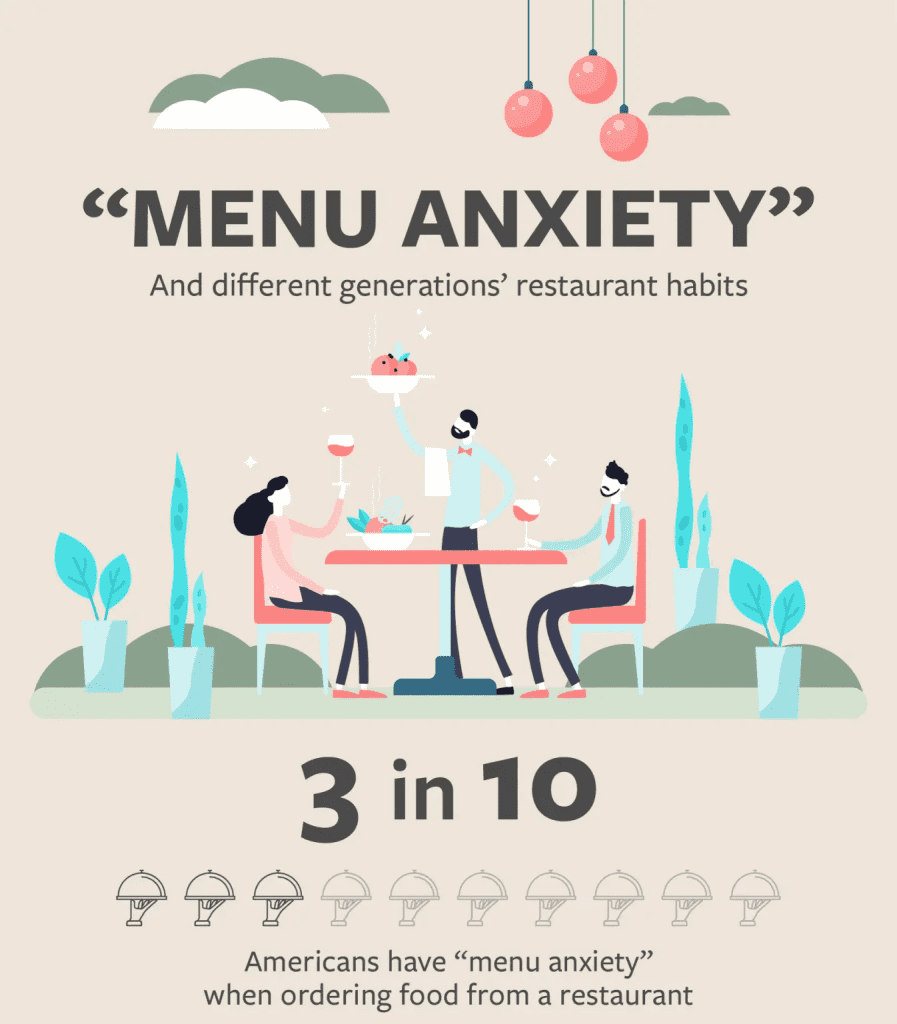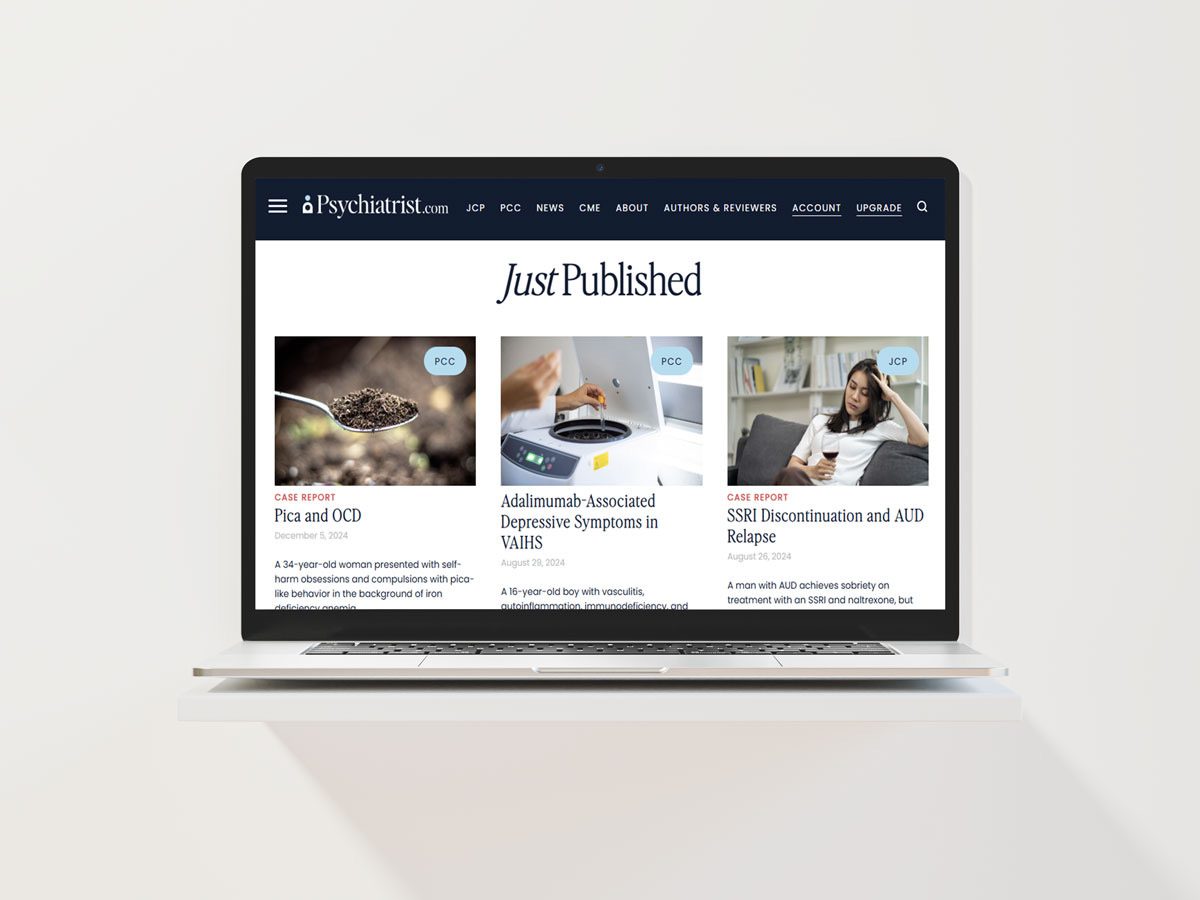The struggle is real for 30 percent of Americans. They can’t order off of a menu without feeling a deep angst known as “menu anxiety.”
According to a new survey of 2,000 adults conducted by OnePoll and commissioned by Avocado Green Mattress, this means one in three Americans feels overwhelmed when presented with a menu in a restaurant or café. Their apprehension is so great they may opt out of any situation that involves confrontation with a printed list of food items.
The survey found that younger generations were more likely to experience menu paralysis. Over 40 percent of Gen Z and millennials (aged 18–43) admitted to menu phobias, in contrast to only 15 percent of Gen X and baby boomers (aged 44–77).

Thousands of TikTok videos also document struggles with ordering a meal. Some posters admit they will pull up the menu online and review it obsessively before they can work up the courage to accept an invite to a restaurant or show up even if they RSVP with a “yes.”
Anticipation and Anxiety
Don’t bother looking up menu anxiety in the DSM-5. It’s not an actual diagnosis. But Amit Kumar, assistant professor of marketing and psychology at the University of Texas at Austin, told Psychiatrist.com that ordering agitation makes a certain amount of sense when put in the context of a phenomenon known as anticipatory utility.
“Anticipatory utility is the pleasure or satisfaction that people derive from the anticipation of a future event,” explained Kumar. “So this is a bad version of that.”
While in general people tend to look forward to an event such as a vacation, a visit to a friend, or dining out, Kumar said that menu anxiety flips anticipatory utility on its head, leading to debilitating indecision.
For some, it’s having too many choices. For others, menus are difficult to understand because of unfamiliar ingredients or confusing descriptions. Then there’s the pressure to make the “right” choice, either to impress fellow diners or to avoid regretting their selection later on. Never mind, the real fear for some people over hidden ingredients that trigger food allergies or go against dietary restrictions.
Evidence and Contradictions
While the current poll is more anecdotal than scientific, the meager research on this topic seems to track with its findings. A 2018 study published in the journal, Foods, suggested that menu complexity can lead to choice overload and decision fatigue, which can negatively impact customer satisfaction and the overall dining experience.
Another study, though not specifically looking at menu anxiety, suggested that the anterior cingulate cortex and the striatum, reach a point of diminishing satisfaction when faced with too many choices. These are the areas of the brain responsible for determining value and assessing potential costs and benefits of decisions respectively. Subjects choosing from an array of scenic portraits to print on a mug, demonstrated that somewhere around a dozen choices seems to be the sweet spot between reward potential and expended effort. Beyond that, these two neural areas can shift into overload, dialing up the frustration.
Last year, The Primary Care Companion for CNS Disorders published a case study of a woman with deipnophobia. This is a type of social anxiety disorder wherein the individual feels anxious while dining in public or engaging in dinner conversations. She reported having panic attacks about the entire dining out experience, including perusing the menu. Ultimately she was successfully treated with the drug, venlafaxine.
But looking at the current menu anxiety poll responses another way, Kumar said it backs up his research. “For the majority of us, the anticipation of an event can actually be pleasurable. Most of us kind of look forward to these experiences with excitement and delight. We’re more likely to feel dissatisfaction with buying shoes versus ordering food.” he said.
In a study cheekily entitled, Waiting for Merlot: Anticipatory Consumption of Experiential and Material Purchases, Kumar and his colleagues found that people reported feeling happier while anticipating an event such as a vacation or night out versus contemplating a material purchase. Mood changes persisted even after the purchase. This, he proposed, makes experiences a good investment in long-term happiness versus the accumulation of possessions.
The Bottomline
The research holds a few tips to help patients manage menu anxiety.
- Take your time.
- Remember, there’s no real deadline for making a decision.
- Narrow down your options by deciding on a category or type of dish you are in the mood for.
- Consider asking the server for recommendations.
- Pick from the specials to minimize the number of options.
- Remind yourself that it’s just a meal, not a major life decision.
- It’s okay to make a less-than-perfect choice.
Kumar adds his own bit of advice for people with dish decision distress…
“Try to think of the experience in advance as fodder for conversation or promoting social interactions with others that are positive,” he offered. “Rather than stressing, the meal that you’re going to have is probably enjoyable because you’re going out to dinner with people that you like and having a fun time.”



